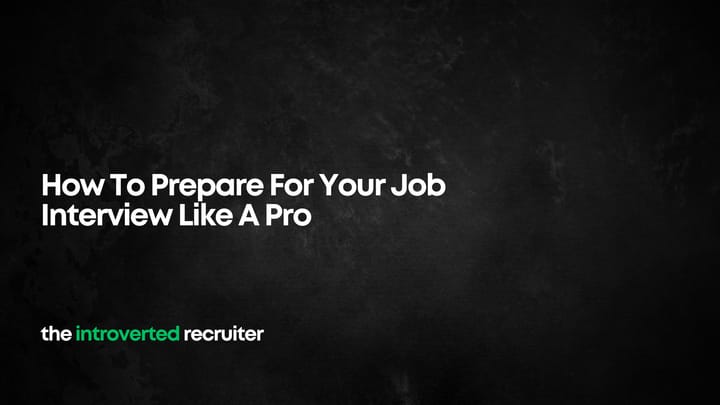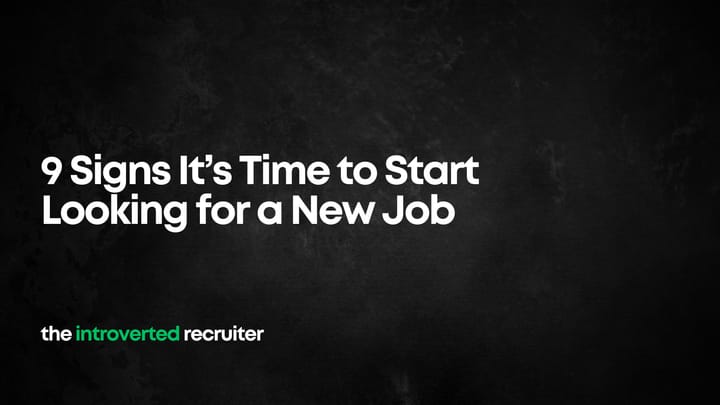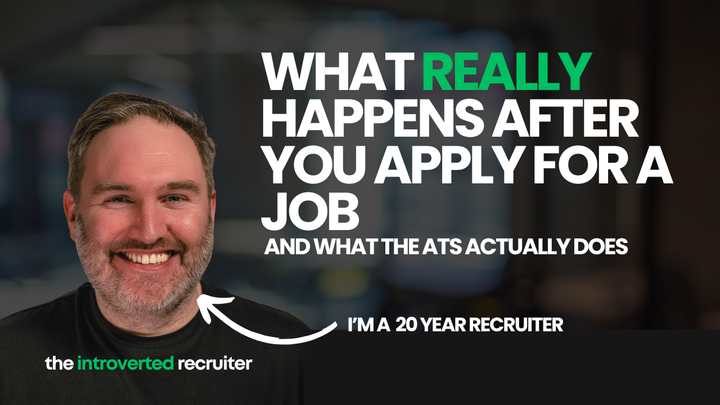Why Your CV Isn’t Working: Common Pitfalls and Quick Fixes
Ever feel like you’re firing off CVs into the void? You’re not alone. A lot of people spend hours perfecting their CVs, only to get ghosted by employers. It’s frustrating, but it’s also fixable.
As someone who’s been on the recruitment side for years, I can tell you there are some common mistakes that could be holding your CV back from getting the attention it deserves. Let’s dive into the biggest CV pitfalls and, more importantly, how to fix them so your CV works for you, not against you.
1. Big Picture Problems: Your CV Lacks Focus
One of the first things recruiters look for is clarity. We want to know who you are and what you bring to the table at a glance. If your CV feels like a random collection of jobs and skills, we’re likely to move on.
1.1 Lacking a Clear Objective or Theme
You may have held various roles or worked in different industries, but your CV needs a clear focus that aligns with the job you’re applying for. A CV that reads like a laundry list doesn’t work; recruiters are looking for someone with a defined career direction.
Quick Fix: Start by defining the type of job you’re after. Craft a professional summary at the top of your CV that ties everything together, highlighting your main strengths and career direction. This isn’t the time to be generic – be specific about what you bring to the table.
1.2 Using Generic Language
Recruiters see “hardworking” and “team player” all the time, and those words do nothing to make you stand out. Avoid phrases that say nothing about your specific abilities or accomplishments.
Quick Fix: Swap vague adjectives for concrete action verbs. Instead of “hardworking,” say “led a project that increased sales by 20%.” Numbers add weight to your claims and give recruiters something real to consider.
1.3 Lack of a Coherent Story
Your CV should tell the story of your career journey. If you’re jumping from one unrelated role to another, you need to create some cohesion to make it easier to read and understand.
Quick Fix: Use your job descriptions to highlight transferable skills and link each role back to your career goals. If you’ve taken on different types of roles, explain briefly how they contribute to your current skills and qualifications.
2. Formatting Fails: Why Style Matters
A great CV isn’t just about content – it’s also about presentation. If your CV is cluttered, hard to read, or just plain messy, recruiters will struggle to find the information they need and may just pass you by.
2.1 Visual Clarity and Readability
Recruiters don’t have the time (or patience) to read dense blocks of text. If your CV is visually overwhelming, it’s not going to hold attention.
Quick Fix: Make use of white space, bullet points, and headers. Break things up so they’re easy to skim, and limit each section to just a few sentences or bullet points to keep it concise.
2.2 Overloading with Design Elements
Creative CVs with graphics and colors can look fantastic in certain fields (like design), but for most industries, these extras are just noise.
Quick Fix: Stick to a simple, clean layout. Let your experience and achievements speak for themselves without flashy design elements. A straightforward design will let recruiters focus on what matters most: your skills and experience.
2.3 Poor Font Choices
Fonts can be surprisingly important. If your font choice makes it hard to read, your CV will end up in the “no” pile.
Quick Fix: Stick to professional fonts like Arial, Calibri, or Times New Roman. Avoid fancy or unusual fonts that can be distracting.
3. Structure Matters: Organize for Impact
A CV with a strong structure grabs attention. It’s all about making it easy for the recruiter to see your qualifications quickly and easily.
3.1 Start with a Strong Professional Summary
Your summary is your hook – it’s the first thing recruiters read, so make it good. This isn’t a career history; it’s a 3-4 sentence snapshot that shows why you’re perfect for the role.
Quick Fix: Focus on your top skills and achievements that are most relevant to the job. Avoid jargon and keep it simple but impactful.
3.2 Organize Your Job History to Highlight Experience
How you lay out your work experience can make or break your CV. Listing roles with no context or description leaves recruiters guessing.
Quick Fix: For each role, provide a brief job overview followed by 2-4 bullet points that focus on key achievements. Instead of saying “responsible for X,” say what you actually accomplished – e.g., “Improved customer satisfaction by 15% by implementing a new service protocol.”
3.3 Prioritize Your Education and Certifications
Education is important, but experience and results speak louder. Place your education section strategically, and if it’s not a major selling point, keep it short.
Quick Fix: Keep education to the essentials: degree(s), institution, and year (if it’s recent). If you have certifications relevant to the job, list them, but avoid overloading with unrelated coursework or old qualifications.
4. Highlighting Achievements: Turn Responsibilities into Impact
One of the most common mistakes is listing responsibilities without mentioning actual achievements. Recruiters want to know how you contributed, not just what you were supposed to do.
4.1 Responsibilities vs. Achievements
Listing responsibilities doesn’t give a sense of your impact, but achievements do. Recruiters are looking for signs that you’ve actually made a difference in previous roles.
Quick Fix: Wherever possible, include measurable results. Think “increased,” “reduced,” or “achieved.” Numbers, percentages, and specific results show that you’re results-oriented and capable of delivering value.
4.2 Quantify Everything You Can
A good CV isn’t just a narrative; it’s data-driven. Numbers give credibility to your achievements.
Quick Fix: Even if it’s a rough estimate, add figures where relevant. For example, “Increased sales by 15%,” “Reduced project time by 20%,” or “Managed a team of 10 across three departments.”
4.3 Keeping It Relevant
Every achievement should tie back to the job you’re applying for. Irrelevant details dilute your impact.
Quick Fix: When tailoring your CV for a specific job, select achievements that align with what the role requires. The aim is to highlight experience that shows you can handle the new role’s demands.
5. Content Pitfalls to Avoid
Some content is just a waste of space – either outdated or irrelevant, and it doesn’t add to your CV’s impact.
5.1 Irrelevant Information
Avoid information that doesn’t add value. Recruiters don’t need your full address, date of birth, or hobbies (unless they’re relevant).
Quick Fix: Stick to contact information, key achievements, and professional experience. Keep it lean and focused on what recruiters actually care about.
5.2 Summarize Old or Irrelevant Roles
If you’ve been in the workforce for a while, not every job needs to be front and center. Less relevant roles can still be included but in a more condensed form.
Quick Fix: Create a “Previous Experience” section to list older roles without extensive detail. This keeps the focus on your recent, most impactful positions.
5.3 Avoiding Clichés and Jargon
Buzzwords don’t impress recruiters – they just make your CV look generic.
Quick Fix: Replace clichés like “team player” and “detail-oriented” with specific examples or achievements that demonstrate those qualities.
6. Section-by-Section Tips for a Cohesive CV
Each section of your CV has a purpose. Here’s how to make the most of each one:
6.1 Professional History: Lead with Results
Make every bullet point count by focusing on outcomes rather than tasks. This shows a recruiter that you’re action-oriented and get things done.
Quick Fix: Keep each bullet point to one sentence where possible, and start with strong action verbs like “led,” “improved,” “generated,” etc.
6.2 Skills Section: Keep It Targeted
Include skills relevant to the role, not just a generic list. Your skills should make sense in the context of your career and the job you’re targeting.
Quick Fix: If you’re applying for a specific type of role, tailor your skills section to include tools or techniques that are most relevant to that role.
6.3 Adding Volunteer or Side Projects
Relevant volunteer work or side projects can show initiative and add depth to your profile, especially if they demonstrate skills or interests that align with the job.
Quick Fix: Include these under a separate section like “Additional Experience,” and focus on skills or outcomes that overlap with the job.
7. First Impressions Matter: The Top Half of Your CV
The top half of your CV is prime real estate. This is where you hook the recruiter and encourage them to keep reading.
7.1 Make an Impact in the First Few Lines
The first few lines should give a quick, powerful overview of your key selling points.
Quick Fix: Start with your professional summary and make it compelling. Summarize what makes you stand out, your top skills, and your career focus.
7.2 Show Off Your Most Recent Role
Your resume should show off your most recent role with strong, impactful details. This is where recruiters expect to see evidence of your current expertise and any relevant, recent achievements.
Quick Fix: For your most recent role, go a little deeper than other sections. Include 3-5 bullet points that showcase major accomplishments, initiatives you led, or results you achieved, particularly if they align with the job you’re applying for.
7.3 Lead with Confidence
Your CV should reflect a confident, assertive tone. Use strong language that conveys your skills without coming across as overblown. Assertive, confident language encourages recruiters to see you as someone who’s competent and ready to take on challenges.
Quick Fix: Swap out weak or passive language like “helped with” or “was involved in” with assertive verbs like “led,” “achieved,” or “spearheaded.” For example, instead of “assisted with customer support,” write “Improved customer support response time by implementing a new system.”
8. Special Cases: Tailoring for Unique Career Situations
Depending on where you are in your career, your CV might need a little customization to tell your story effectively. Here’s how to tackle some of the most common scenarios.
8.1 Career Changers
If you’re switching fields, you need to frame your previous experience in a way that highlights transferable skills. The goal is to show recruiters why you’re a great fit for a new industry, even if your past roles don’t match up perfectly.
Quick Fix: Use your professional summary to explain why you’re moving into a new field, and highlight any transferable skills in your experience section. Even if your experience isn’t directly related, skills like project management, client relations, or data analysis can be incredibly relevant.
8.2 Entry-Level Professionals
For those starting out, you might not have years of experience, but that doesn’t mean your CV can’t stand out. Focus on education, internships, or projects that demonstrate your skills and initiative.
Quick Fix: Include any relevant coursework, internships, volunteer work, or even projects from school if they showcase skills applicable to the job. Use your professional summary to highlight any standout qualities that set you apart, like a strong academic background or relevant technical skills.
8.3 Long Careers and Condensed Histories
If you have over 15 years of experience, it can be tempting to include everything, but recruiters don’t need to see every role. Focus on the past decade and condense earlier roles.
Quick Fix: Include older roles under a “Previous Experience” section with a brief summary or job titles. Concentrate the bulk of your CV on recent, high-impact positions, particularly if they’re aligned with the direction of your career.
9. Proofreading and Editing: Don’t Let Small Mistakes Cost You
A CV with typos or inconsistent formatting can hurt even the most impressive career histories. Take time to edit carefully – it’s a step that can make a big difference.
9.1 Clarity and Brevity
Brevity is your friend. Long sentences and dense paragraphs are harder to read, and they dilute the power of your achievements. Keep it clean, clear, and to the point.
Quick Fix: After writing, go back and trim each section. Ask yourself if every word is necessary. Cut out unnecessary words or phrases and make sure each bullet point is as concise as possible.
9.2 Proofreading Techniques
Even the best writers need a second (or third) look. Typos, grammatical errors, and awkward wording stand out on a CV, so proofread meticulously.
Quick Fix: Read your CV aloud, print it out to review on paper, or ask a trusted friend to go over it. Changing the format – like from digital to paper – can help you spot mistakes you might miss on the screen.
9.3 Consistency Check
Keep formatting consistent throughout. Font choices, bullet point styles, dates, and tense should all follow the same pattern to keep your CV polished and professional.
Quick Fix: Scan your CV for inconsistencies. Are all your headers formatted the same way? Do all your bullet points use the same style? Small tweaks can make your CV feel cohesive and professional.
Make Your CV Work for You
Crafting a powerful CV takes time, but it’s an investment that pays off. By focusing on achievements, keeping the layout clean, and tailoring each section to highlight your most relevant skills, you can create a CV that doesn’t just tell recruiters what you’ve done – it shows them why they should bring you in for an interview.
Remember, your CV isn’t set in stone. Update it as your career progresses, and don’t be afraid to adjust it for each role. In today’s job market, a well-crafted CV is more than just a document – it’s your ticket to new opportunities. Make it count.
Need feedback on your CV?
I built an AI CV Reviewer trained with my 20 years of experience as a recruiter.
It gives you instant, structured feedback so you can see exactly what to improve.
No fluff, no gimmicks—just clear, actionable guidance.
Use it as many times as you like. Lifetime access
Check it out here
Want More Interviews & Faster Job Offers?
If job hunting is starting to feel like an endless cycle of applications and ghosting, let’s fix that.
I’ve put together some no-nonsense job search tools designed to help you land interviews faster—because you don’t need more stress, you need results.
✅ Free CV Template – A CV Template that will actually help you get job interviews.
✅ CV Review Tool - Get real time feedback on your CV using my AI CV Reviewer.
✅ The No-Nonsense Job Search System – A step-by-step course to help you cut through the noise and get hired faster.
Your next job is closer than you think—let’s make it happen.
Follow Me
Find me on LinkedIn , TikTok , YouTube or Instagram where I share lot’s of practical no nonsense advice.



